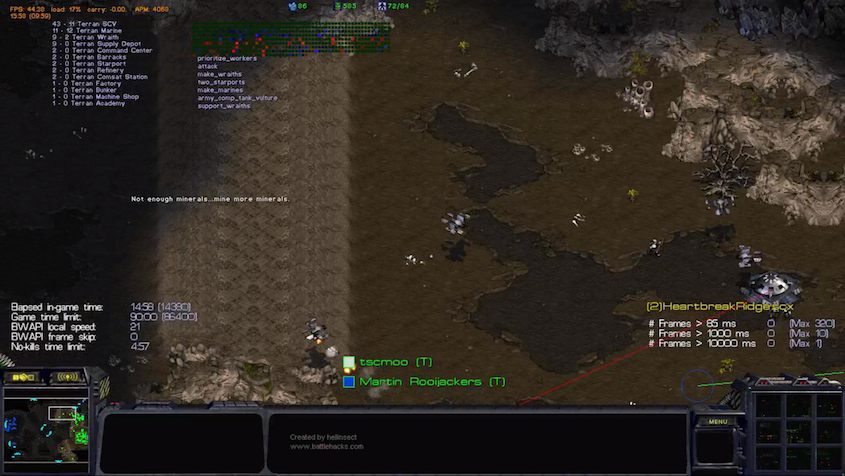Tscmoo’s crazy hydra rush
Tscmoo zerg was reuploaded today and plays at least 2 crazy new rushes. The one that caught my eye was a hydralisk rush that has defeated SAIDA 3-0 so far: Tscmoo opens spawning pool on 8 supply, then 7 gas, 6 hydra den, and sends 1 drone to scout (which may or may not ever return), leaving 4 to mine both minerals and gas. Then it sends out unupgraded hydras as fast as it can! It constantly juggles drones onto and off of gas, stopping gas as soon as the available vespine goes over 50. 4 mining drones are not quite enough to produce hydralisks without losing the occasional larva spawning opportunity, but Tscmoo comes as close as it can. (I have a source that claims you need 6 on minerals and 1 on gas to produce hydras non-stop from 1 hatchery. I haven’t done the measurement myself, but I’m pretty sure that 5 or 6 drones total are enough if you can juggle the gas like Tscmoo.)
Here are the 3 wins over SAIDA. Maybe SAIDA looks at Tscmoo’s base and concludes “I see a hydra den, therefore it is not a fast rush and I have nothing to worry about.” Or maybe SAIDA doesn’t worry about fast rushes at all, since its worker defense is so strong, and concludes “the drone count is low, I have nothing to worry about.” In any case, SAIDA continues with its usual greedy build and falls into a hole when the hydras appear and sweep away the first marine and first vulture. The worker defense skills against zerglings are no use, and SAIDA does not appear to adapt its build order at all. In the one game where SAIDA was not overrun altogether, its build got discombobulated and it let thousands of minerals stack up as it tried to counter the hydras with tanks—then lost to mutalisks. The 3 games show no sign that SAIDA was trying to adapt to the danger.
- 1. on Heartbreak Ridge - the first game, where SAIDA massed tanks
- 2. on La Mancha
- 3. on Jade - the latest and shortest game
The hydra rush is genuinely crazy. It can only work against a greedy build like the one SAIDA thinks it can get away with (and usually can), and then only if the opponent doesn’t understand what’s happening and adapt. Tscmoo also tried the rush against terran Tyr by Simon Prins, which played a slightly less greedy build and won. All that was needed was to keep making marines.
The hydra rush is unlike any strategy I have seen before. It is also not efficient as played. It didn’t take me long to code up a small family of related rushes to try out in Steamhammer. I got one version that starts the hydras at the same time as Tscmoo and produces them faster, and another that starts them earlier and still produces them faster (at the cost of needing to do more damage to be able to transition to a midgame build). Plus in some circumstances you can increase the punch by mixing in a few zerglings. I will likely end up keeping 2 or 3 variants permanently, for occasional use. It will be a fun challenge to get strategy adaptation to use them at appropriate times.
Still next: Longer-term plans for Steamhammer. It is taking me longer than I expected to gather my thoughts.
Update: I tested one of my variants, which I named 7-7HydraLingRush, against a few opponents. Though stronger than Tscmoo’s build, it scores less than 50% against the built-in terran AI—it is utterly weak against an opponent that makes units early. But—I love the contrast—it also breaks Iron bot like a toothpick. In a typical game, Iron smells it coming and walls in. Steamhammer hammers through the wall, killing the barracks and/or both supply depots and any SCVs that come to repair, then repeats the performance on the mineral line and command center while Iron’s few units shy out of range, unable to engage. Even in a test game where Steamhammer got confused and failed to attack, it held Iron in its base and won. I’ve configured it as a regular counter-factory opening; the development version of Steamhammer now has 6, up from 4 in the current release.















